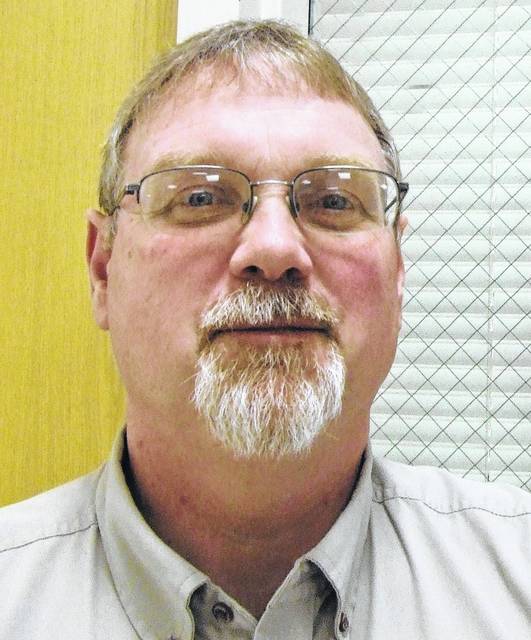
What a great week we have had — sunshine and mild temperatures most days, dry weather all but Thursday, football victories for the Buckeyes and Clinton-Massie and much needed progress with harvest.
Yields have been so good that many on farm storage facilities as well as commercial facilities are full, slowing down harvest until more room can be made for incoming grain. Forecasts are calling for rain mid next week, but let’s hope several more farmers can complete harvest before then.
In the meantime, there should be a lot of cheering in the county to support Clinton-Massie in their attempt to be victorious at the state football championship — and don’t forget the Buckeyes. They still have a slim chance to be in the college football playoffs, but they have to be victorious against Wisconsin first.
Greg LaBarge, area agronomist for the College of Food, Agriculture and Environmental Sciences, announced a new website has been launched that is designed to help landowners and operators use visual clues in the landscape or management records to identify fields or stream/ditches where targeted practices can reduce erosion and nutrient losses that impair Ohio watersheds.
Private and public dollars available to address erosion and nutrient loss concerns from agricultural production fields are limited. The intent of this website is to empower farmers/landowners with the knowledge necessary to identify the high-risk situations that exist in their farm fields and the ability to know when to seek professional help for implementing cost effective conservation.
This website provides a summary of “Critical Concerns” found in the landscape and in agronomic farm plans, a review of potential “Best Management Practices (BMPs)”, and a list of resources and people/agencies to contact.
The Ag BMP’s can be found at https://agbmps.osu.edu/ . Below are descriptions of website pages you will find:
Critical Concerns — Pictures and descriptions of critical resource concerns to use in identification plus links to potential BMP’s that address those concerns.
BMP Practices — A listing of all BMP practices with descriptions, effectiveness, pros and cons of the practice, things to consider and contacts for further inquiry.
Frequently Asked Questions (FAQ) — Answers to common questions and helpful background information.
Submit — A place to submit pictures of critical concerns or BMP’s in action to add to the website or questions for FAQ.
People — Contacts for people and organizations available to assist in answering questions or seeking cost share.
A website provides a vehicle that can be used in the field on mobile devices plus is easily updated with new information on cost of implementation, effectiveness of practices to address water quality and other factors as new research is made available. Suggestions, comments and pictures are sought to continue to improve these resources.
The website has been made possible by funding from Ohio State University Extension, College of Food, Agricultural, and Environmental Sciences, with input from Ohio Soil and Water Conservation Districts, Natural Resources Conservation Service, The Nature Conservancy and funding from Ohio Soybean Council, National Fish and Wildlife Foundation and Great Lakes Restoration Initiative.
If you have questions or suggestions on the website, contact Greg LaBarge at [email protected].
Barry Ward, Leader, Production Business Management, OSU Extension, Ag and Natural Resources points out that a large number of Ohio farmers hire machinery operations and other farm related work to be completed by others. This is often due to lack of proper equipment, lack of time or lack of expertise for a particular operation.
Many farm business owners do not own equipment for every possible job that they may encounter in the course of operating a farm and may, instead of purchasing the equipment needed, seek out someone with the proper tools necessary to complete the job.
This farm work completed by others is often referred to as “custom farm work” or more simply “custom work.” A “custom rate” is the amount agreed upon by both parties to be paid by the custom work customer to the custom work provider.
Custom farming providers and customers often negotiate an agreeable custom farming machinery rate by utilizing Extension surveys results as a starting point. Ohio State University Extension collects surveys and publishes survey results from the Ohio Farm Custom Survey every other year. This year we are updating our published custom farm rates for Ohio.
I know locally in Clinton County many of you perform these custom services and request information to determine what to charge. Going into the new year, we need your assistance in securing up-to-date information about farm custom work rates, machinery and building rental rates and hired labor costs in Ohio.
Please provide rates that are current including the latest price increases or planned increases.
An online option for this survey is available at: OhioFarmCustomRatesSurvey2018.
We would ask you to please respond even if you know you only have a few operations with data. We want information on actual rates, either what you paid to hire work or what you charged to perform custom work.
Tony Nye is the state coordinator for the Ohio State University Extension Small Farm Program and has been an OSU Extension Educator for agriculture and natural resources for 29 years, currently serving Clinton County and the Miami Valley EERA.


